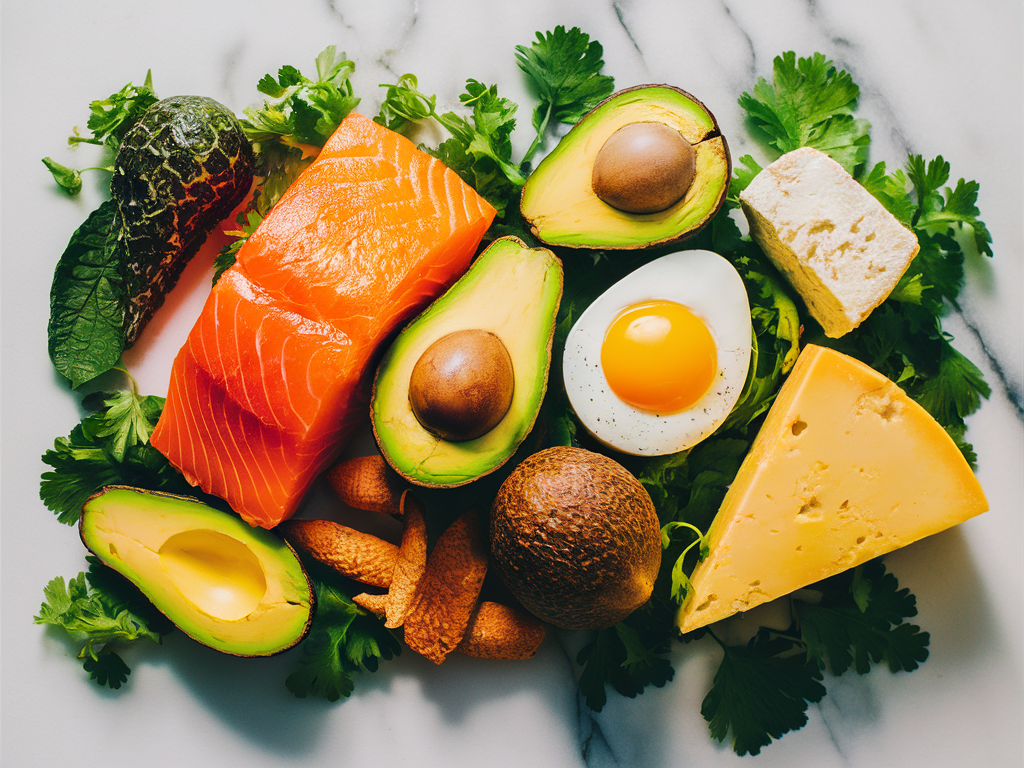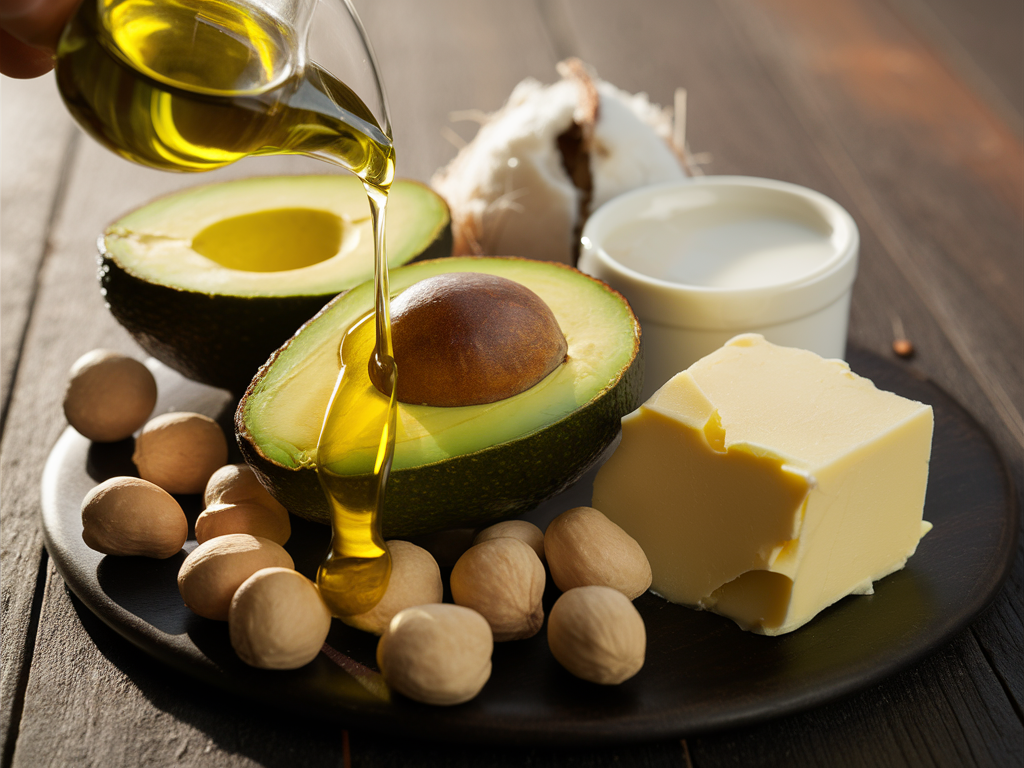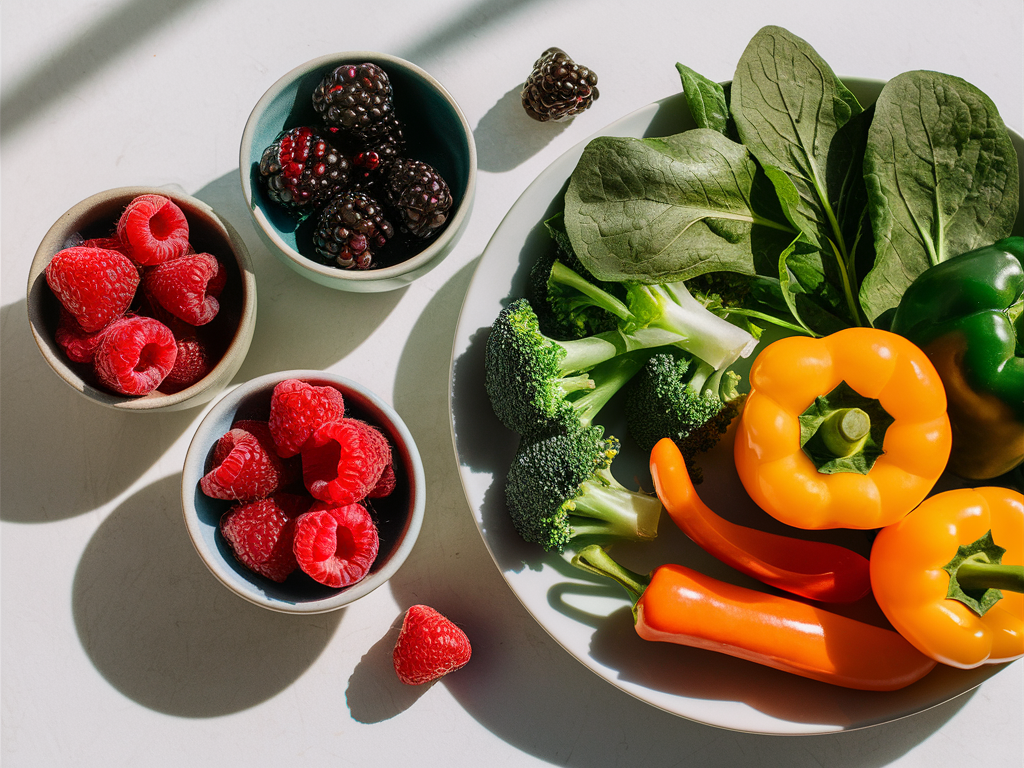Looking to start a ketogenic lifestyle? Discover 25 nutrient-rich, low-carb foods that make the keto diet both effective and delicious while helping you achieve your health and weight loss goals.
The ketogenic diet represents a fundamental shift in how we fuel our bodies. Unlike conventional diets that rely on carbohydrates for energy, the keto approach drastically reduces carb intake while significantly increasing fat consumption. This metabolic strategy forces your body to enter ketosis, a state where it burns fat for fuel instead of glucose, potentially leading to impressive weight loss results and numerous health benefits.
When you limit carbohydrates to typically under 50 grams daily, your body exhausts its glucose reserves and begins converting fat into ketones, which serve as an alternative energy source for your brain and body. This metabolic adaptation often results in enhanced fat burning, reduced hunger sensations, and stabilized blood sugar levels.
The foods showcased in this comprehensive guide support ketosis while providing essential nutrients that many restrictive diets lack. From protein-rich animal products to fiber-packed vegetables, these selections ensure you maintain nutritional balance while adhering to the keto framework, supporting not just weight management but overall metabolic health.
Animal Proteins: The Foundation of Keto Nutrition
Eggs: Nature’s Perfect Keto Food
Eggs stand as perhaps the most versatile keto staple, offering an impressive nutritional profile with approximately 6 grams of protein, 5 grams of fat, and less than 1 gram of carbohydrates per large egg. They provide choline, which supports brain health, along with lutein and zeaxanthin for eye protection.
The culinary flexibility of eggs makes them indispensable in ketogenic meal planning. From simple scrambles and omelets to more advanced applications like egg-based wraps or cloud bread, eggs seamlessly integrate into any meal throughout the day. Their binding properties also make them essential for keto baking, helping create bread alternatives and desserts that maintain the appropriate macronutrient ratios.
Fatty Fish: Omega-3 Powerhouses
Salmon, mackerel, and sardines deliver exceptional nutritional value on a ketogenic diet. These fatty fish varieties provide high-quality protein alongside omega-3 fatty acids EPA and DHA, which have been associated with reduced inflammation, improved heart health, and enhanced brain function. Regular consumption may help counterbalance the increased saturated fat intake common in some keto diets.
For optimal keto preparation, consider simple methods that preserve healthy fats while adding minimal carbohydrates. Baking salmon with olive oil and herbs, pan-searing mackerel with butter, or enjoying tinned sardines with a squeeze of lemon all represent excellent low-carb approaches that maximize nutritional benefits while supporting ketosis.

Grass-fed Beef: Superior Quality Protein
Grass-fed beef distinguishes itself from conventional alternatives through its enhanced nutrient composition, including higher levels of omega-3 fatty acids, conjugated linoleic acid (CLA), and antioxidants like vitamin E. This nutritional advantage makes it particularly valuable for keto dieters focused on consuming nutrient-dense whole foods.
The natural fat-to-protein ratio in cuts like ribeye, chuck, and ground beef (80/20) aligns perfectly with ketogenic requirements. These selections provide sufficient dietary fat to maintain ketosis while delivering complete protein to support muscle preservation during weight loss. For optimal health benefits, prioritize grass-fed options whenever budget permits.
Chicken Thighs: Budget-Friendly Fat Source
Chicken thighs offer significantly more fat content than breast meat, making them nutritionally superior for ketogenic eating patterns. With approximately 15 grams of fat per 3.5-ounce serving compared to just 3 grams in the same amount of breast meat, thighs help maintain the high-fat ratio essential for ketosis.
As one of the more economical protein options in the meat department, chicken thighs represent an accessible entry point for those transitioning to keto eating. They adapt well to various cooking methods, from simple seasoned baking to more complex preparations with keto-friendly sauces, making them a versatile addition to meal rotation plans.
Bacon: The Quintessential Keto Indulgence
Bacon’s high fat content (approximately 68% of calories) makes it remarkably compatible with ketogenic macronutrient targets. A typical serving provides about 12 grams of fat with minimal carbohydrates, helping keto dieters maintain the 70-80% fat intake necessary for sustained ketosis.
When selecting bacon, quality considerations become important for long-term health. Opt for naturally cured varieties without added sugars or nitrates when possible. Pastured or organic options may offer improved fatty acid profiles, though conventional bacon still fits within keto parameters. While bacon can feature prominently in a well-formulated ketogenic diet, balancing it with less processed protein sources ensures nutritional diversity.
Dairy Products: Keto-Friendly Fat Sources
Full-fat Greek Yogurt: Probiotics with Moderation
Full-fat Greek yogurt offers valuable probiotic benefits that support gut health during ketogenic eating. The fermentation process creates beneficial bacteria that may improve digestion and immune function, which can be particularly valuable when dietary changes affect gut microbiota composition.
To enjoy Greek yogurt while maintaining ketosis, portion control becomes essential. A 100-gram serving contains approximately 5 grams of carbohydrates, requiring careful incorporation into daily carb allowances. Consider enhancing plain versions with keto-friendly additions like crushed macadamia nuts, a sprinkle of cinnamon, or a few berries to create a satisfying treat that remains within carbohydrate limits.
Cheese Varieties: Versatile Zero-Carb Options
Hard and aged cheeses like cheddar, Gouda, and Parmesan provide essentially zero carbohydrates while offering complete protein and significant calcium content. Soft varieties such as Brie, Camembert, and goat cheese deliver similar benefits with distinctive flavor profiles, expanding culinary possibilities while maintaining ketogenic parameters.
Beyond their macronutrient advantages, cheeses contribute substantial calcium to the ketogenic diet, addressing a common nutritional gap in low-carb eating patterns. A standard 1-ounce portion typically provides 200mg or more of calcium, supporting bone health while delivering fat-soluble vitamins like vitamin K2, which directs calcium to appropriate tissues.
Heavy Cream: The Keto Kitchen Essential
Heavy cream transforms ketogenic cooking and beverage preparation with its substantial fat content (approximately 88% of calories from fat) and minimal carbohydrates (about 0.4g per tablespoon). This macronutrient profile makes it an ideal addition to coffee, creating “keto coffee” that many practitioners use to extend fasting periods or increase daily fat intake.
In culinary applications, heavy cream creates luxurious textures in keto-friendly sauces without the thickeners that typically add carbohydrates. From basic applications like creamed spinach to more elaborate preparations such as pan sauces for proteins, heavy cream facilitates restaurant-quality results while maintaining strict ketogenic ratios.
Butter and Ghee: Traditional Cooking Fats
Butter provides approximately 11 grams of fat per tablespoon with negligible protein and zero carbohydrates, making it ideal for adding richness to ketogenic dishes. Its composition includes short and medium-chain fatty acids that support ketone production, while natural butyrate content may offer gut health benefits.
Ghee, or clarified butter, removes milk solids to create a higher-smoke-point alternative that retains butter’s flavor profile while eliminating potentially inflammatory components. This distinction makes ghee particularly valuable for high-heat cooking applications and offers an alternative for individuals with mild sensitivity to dairy proteins, as most are removed during the clarification process.
Healthy Fats: The Core of Ketogenic Nutrition

Avocados: Nature’s Perfect Keto Fruit
Avocados stand apart in the ketogenic pantry by providing substantial potassium (approximately 485mg per 100g) and fiber (around 7g per medium fruit) alongside their impressive healthy fat content. This unique nutritional composition helps counteract the potential electrolyte imbalances and digestive challenges that sometimes accompany low-carb eating plans.
The culinary adaptability of avocados makes them indispensable in keto meal planning. Beyond the ubiquitous guacamole, consider incorporating them into smoothies for creamy texture without added sugars, using them as bases for chocolate puddings, or simply adding slices to salads and protein dishes for enhanced satiety and nutrient density.
Olive Oil: Mediterranean Keto Essential
Extra virgin olive oil delivers monounsaturated fats that support heart health while providing powerful polyphenols with antioxidant properties. These compounds, including oleocanthal and oleuropein, offer anti-inflammatory benefits that may enhance the already impressive metabolic improvements associated with ketogenic eating.
For optimal incorporation into ketogenic cooking, reserve high-quality olive oils for cold applications and low-temperature cooking. Drizzling over finished dishes, creating emulsified dressings, or using as a finishing touch preserves delicate flavor compounds and heat-sensitive nutritional elements while adding substantial healthy fats to maintain proper ketogenic ratios.
Coconut Oil: MCT-Rich Metabolism Booster
Coconut oil’s high concentration of medium-chain triglycerides (MCTs) sets it apart from other cooking fats in the ketogenic arsenal. These unique fatty acids bypass normal digestive pathways and convert more readily to ketones, potentially accelerating adaptation to ketosis and providing rapidly available energy without insulin involvement.
In the kitchen, coconut oil’s high smoke point (approximately 350°F/177°C for virgin varieties) and neutral flavor in refined versions make it exceptionally versatile. From sautéing vegetables to creating keto-friendly baked goods that maintain structural integrity at room temperature, coconut oil provides both functional and metabolic advantages in ketogenic meal preparation.
Nuts and Seeds: Nutrient-Dense Fat Sources
Macadamia nuts lead the ketogenic nut selection with their impressive fat-to-carb ratio (approximately 21g fat and 4g total carbs per ounce), followed closely by pecans, Brazil nuts, and walnuts. Almonds, while slightly higher in carbohydrates, offer substantial vitamin E and magnesium that support overall health during carbohydrate restriction.
Careful portion control remains essential when incorporating nuts and seeds into ketogenic meal plans. Their combination of fats, fiber, and flavor can lead to overconsumption, potentially exceeding carbohydrate limits or caloric needs. Pre-portioning into single-serving containers or measuring with kitchen scales helps maintain appropriate intake while benefiting from these nutrient-dense additions.
Low-Carb Vegetables: Essential Micronutrients
Leafy Greens: Nutrient Powerhouses
Spinach, kale, and other leafy greens provide exceptional micronutrient density while contributing minimal impact to daily carbohydrate limits. These vegetables deliver substantial magnesium, potassium, and vitamin K—nutrients often depleted during the initial adaptation to ketogenic eating—while adding only 1-2 grams of net carbs per cup.
To maximize consumption while maintaining ketosis, consider volume-reducing cooking methods that allow larger portions within the same carbohydrate parameters. Sautéing spinach in ghee reduces several cups to a manageable side dish, while massaging raw kale with olive oil and salt breaks down fibrous structures for improved digestibility and reduced volume, allowing greater nutrient intake without exceeding carb thresholds.
Cruciferous Vegetables: Fiber-Rich Selections
Broccoli, cauliflower, and Brussels sprouts deliver substantial fiber that supports digestive health during the typically lower-fiber ketogenic approach. This fiber content helps maintain regular elimination, feeds beneficial gut bacteria, and contributes to the satisfying nature of well-formulated ketogenic meals despite their relatively low caloric density.
These versatile vegetables have become foundations for creative keto recipe applications. Riced cauliflower substitutes for grains in various dishes, while roasted Brussels sprouts with bacon and broccoli smothered in cheese sauce offer satisfying sides that maintain appropriate macronutrient ratios. These preparations transform potentially boring vegetables into crave-worthy components of sustainable ketogenic eating patterns.
Zucchini: The Versatile Pasta Alternative
Zucchini’s mild flavor profile and adaptable texture have established it as the premier pasta alternative in ketogenic cooking. With approximately 3 grams of net carbs per cup compared to 40+ grams in traditional pasta, spiralized zucchini “noodles” create a satisfying base for various sauces while maintaining the substantial carbohydrate restriction necessary for ketosis.
Beyond simple noodle substitution, zucchini contributes valuable potassium, vitamin C, and B vitamins to ketogenic meal plans. Its high water content also supports hydration, addressing another common challenge during keto adaptation. Consider additional preparations like zucchini boats stuffed with seasoned ground meat and cheese or sliced zucchini layered into low-carb lasagna alternatives.
Bell Peppers: Colorful Carb Considerations
Bell peppers, particularly red varieties, provide exceptional vitamin C content, delivering more than 100% of daily requirements in a single medium pepper. This antioxidant support becomes especially valuable during dietary transitions when overall fruit intake may decrease due to carbohydrate restrictions.
When incorporating bell peppers into ketogenic meal plans, portion awareness helps manage their slightly higher carbohydrate content (approximately 4-6g net carbs per medium pepper). Slicing them as dipper alternatives for high-fat spreads, incorporating into omelets, or using as containers for keto-friendly stuffings allows their nutritional benefits and bright flavors to enhance meals while maintaining appropriate carbohydrate limits.
Keto-Friendly Berries: Measured Sweet Indulgences

Raspberries: Lowest-Carb Berry Option
Raspberries emerge as the optimal berry choice for ketogenic eating plans, containing approximately 5 grams of net carbohydrates per 100-gram serving. This lower carbohydrate content allows for reasonable portions within strict ketogenic parameters while still providing the satisfaction of fresh fruit flavors.
Beyond their favorable carbohydrate profile, raspberries deliver impressive antioxidant benefits through compounds like ellagic acid and quercetin. These phytonutrients support cellular health and may reduce oxidative stress, complementing the metabolic benefits already associated with ketogenic eating patterns and potentially enhancing long-term health outcomes.
Blackberries: Fiber-Rich Occasional Treats
Blackberries provide substantial fiber content (approximately 5 grams per 100-gram serving) that partially offsets their total carbohydrate count, resulting in about 5-6 grams of net carbs per serving. This fiber content slows the absorption of the berries’ natural sugars while supporting digestive health during carbohydrate restriction.
To enjoy blackberries while maintaining ketosis, incorporate them as intentional, measured additions rather than casual snacks. Consider combining a carefully weighed portion with unsweetened Greek yogurt and a sprinkle of chopped nuts for a complete keto-friendly dessert that satisfies sweet cravings while providing balanced macronutrients within established carbohydrate limits.
Flavor Enhancers: Zero-Carb Taste Boosters
Herbs and Spices: Unlimited Flavor Potential
Fresh and dried herbs like basil, rosemary, thyme, and cilantro provide virtually zero carbohydrate impact while dramatically enhancing the palatability of ketogenic meals. Similarly, most spices including turmeric, cinnamon, cumin, and paprika add negligible carbohydrates when used in typical culinary amounts, allowing for creative flavor development without compromising ketosis.
Beyond their flavor contributions, many herbs and spices offer significant health benefits through bioactive compounds. Turmeric provides anti-inflammatory curcumin, cinnamon may help regulate blood sugar, and rosemary contains antioxidant carnosic acid. These functional benefits make liberal herb and spice usage a win-win proposition for keto practitioners seeking both flavor and enhanced health outcomes.
Bone Broth: Nourishing Electrolyte Source
Homemade or quality commercial bone broths provide crucial electrolytes—particularly sodium, potassium, and magnesium—that help prevent or alleviate the “keto flu” symptoms commonly experienced during the transition to ketogenic eating. This natural electrolyte profile supports cellular hydration and neurological function during the significant water shifts that accompany carbohydrate restriction.
The collagen and gelatin content in properly prepared bone broth offers additional benefits for joint health, gut integrity, and skin elasticity. These structural proteins provide glycine and proline, amino acids often underrepresented in the muscle-meat-heavy portions of some ketogenic approaches, creating more balanced amino acid intake while adding satisfying mouthfeel to soups, sauces, and standalone beverages.
Conclusion: Creating a Sustainable Ketogenic Lifestyle
Successfully incorporating these 25 ketogenic staples into your daily routine requires thoughtful planning and preparation. Consider batch cooking proteins like chicken thighs or grass-fed beef to simplify weekday meals, pre-portion nuts and seeds to prevent overconsumption, and maintain a well-stocked refrigerator with easy-access vegetables for quick meal assembly.
The quality of your ketogenic food choices significantly impacts long-term success and health outcomes. Emphasize organic produce when possible to minimize pesticide exposure, select pastured animal products for improved fatty acid profiles, and prioritize unrefined, cold-pressed oils that preserve beneficial compounds. These quality considerations enhance the nutritional density of your ketogenic approach while potentially improving the metabolic benefits associated with carbohydrate restriction.
As you explore this comprehensive list of ketogenic foods, remember that sustainable dietary changes require personal adaptation and enjoyment. Experiment with different combinations and preparations of these core ingredients to discover your unique, satisfying version of ketogenic eating—one that supports your health goals while providing sufficient pleasure and variety to maintain long-term adherence.

